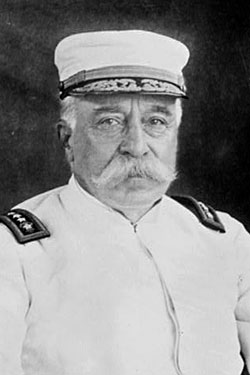The Spanish-American War (Continued)
In 1898, President McKinley moved the battleship U.S.S. Maine to the capital of Cuba to help quell riots that had erupted. When an explosion sank the battleship, the American public blamed it on the Spanish. Reluctant to enter war, but spurred by American sentiment, McKinley finally authorized war in April of 1898.
|
|
| Admiral George Dewey |
Under the leadership of Admiral George Dewey, the United States began the war by attacking Spanish ships in the Philippines. At the same time the Spanish fleet in Cuba was attacked. Meanwhile, Theodore Roosevelt led one of the ground attacks in Cuba as the leader of the Volunteer Calvary known as the Rough Riders. In a little over two months, the United States defeated Spain.
At the signing of the Treaty of Paris in December 1898, the Spanish government paid the United States twenty million dollars and gave up rights to the territories of the Philippines, Puerto Rico, and Guam. It had established presences in the Philippines but the Cubans, Filipinos, and Puerto Ricans did not become United States citizens. Cuba was recognized as independent.
The United States continued military rule in Cuba until a government was established. Under the Platt Amendment, the United States established naval bases in Cuba. After fighting with the United States for independence from Spain, Filipinos found themselves dependent upon the United States. Rebels continued to fight until the Philippines claimed independence in 1946. Puerto Ricans were granted United States citizenship in 1917.
After the United States claimed the Philippines as a territory, President McKinley made it known that he expected the American presence in Asia to include rights to trade with neighboring China. His Secretary of State, John Hay, created something known as the Open Door Policy which stated that all nations should have equal opportunity to trade with China. Hay’s intent was to ensure that all imperialistic nations should group together and keep others from exerting control over their spheres of influence.
